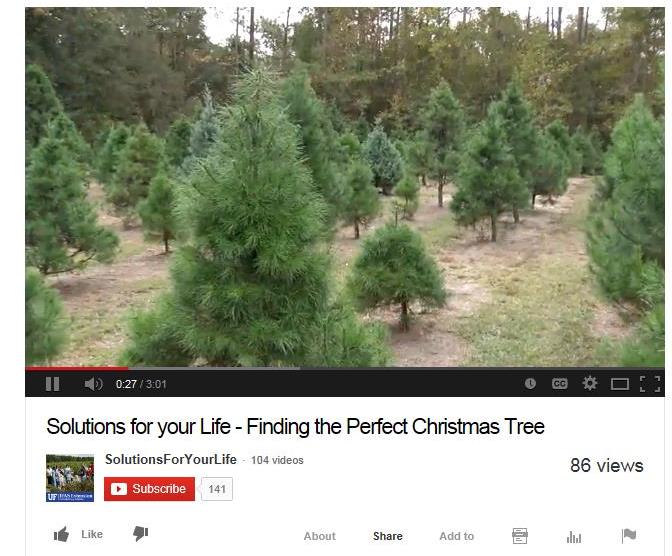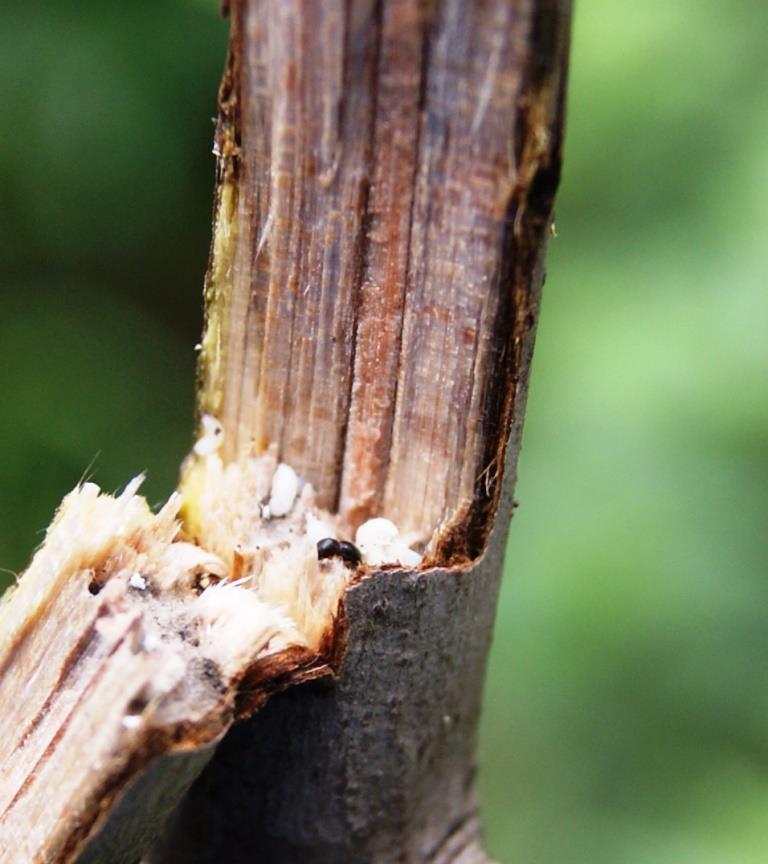
by Larry Williams | Dec 17, 2013
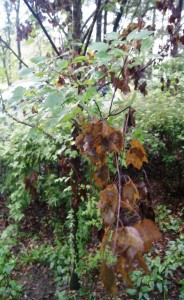
Common symptoms of the black twig borer. Image Credit Matthew Orwat UF IFAS Extension
Q. Small branches are dying in some of my trees. What’s causing this?
A. More than likely the culprit is the Black Twig Borer. This very small beetle, about 1/16 inch long, has been active this year.
Common trees attacked include cedar, golden rain tree, maple, redbud, sweetgum, loquat, dogwood, Shumard oak, Chinese elm, magnolia, Bradford pear and pecan. The beetle is not limited to these trees. And it may attack woody shrubs and grapevines.
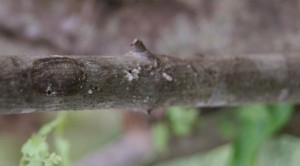
Black Twig Borer Entry Holes. Image Credit Matthew Orwat UF IFAS Extension
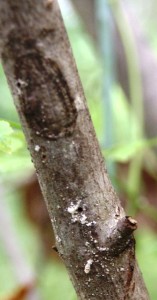
Black Twig Borer Entry Holes. White Frass Visible. Image Credit Matthew Orwat UF IFAS Extension
This beetle only damages branches that are approximately pencil size in diameter. These small branches die above the point of entrance with the leaves turning brown, creating a flagging effect of numerous dead branches scattered throughout the outer canopy of the tree. These dead twigs with their brown leaves are what bring attention to the infested trees.
Bending an infested twig downward will result in it snapping or breaking at the entrance/exit hole. Carefully putting the twig back together may allow you to see the hole. The hole is usually on the underside of the branch and will be very small, about the size of pencil lead in diameter. Sometimes you may see the minute, shiny black beetle and/or the white brood inside the hollowed out area of the twig at the point where it snapped.
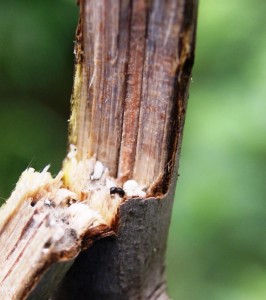
Black Twig Borer inside the stem. Image Credit Matthew Orwat UF IFAS Extension
The black twig borer, Xylosandrus compactus, is one of the few ambrosia beetles that will attack healthy trees. However, the heavy rainfall this summer stressed many of our tree and plant species making them more susceptible to insect damage and disease.Female beetles bore into small branches or twigs of woody plants, excavate tunnels in the wood or pith and produce a brood. Damage occurs when the beetle introduces ambrosia fungi on which the larvae feed. The beetles emerge in late February, attack twigs in March and brood production begins in April. Highest population levels occur from June to September. Adults spend the winter in damaged twigs and branches. So it’s important to pickup and dispose of the small branches as they fall.
Where practical, the best control is to prune tree limbs 3-4 inches below the infested area, then remove and destroy the limbs. Proper mulching, avoiding over fertilization and irrigating during dry weather should improve tree health, allowing trees to better withstand attacks. Chemical controls are usually not practical or effective.
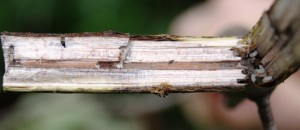
Entry point from a different angle. Image Credit Matthew Orwat UF IFAS Extension
Additional information on this beetle is available though the UF IFAS Extension Office, your County Forester or online at the UF IFAS Featured Creature page
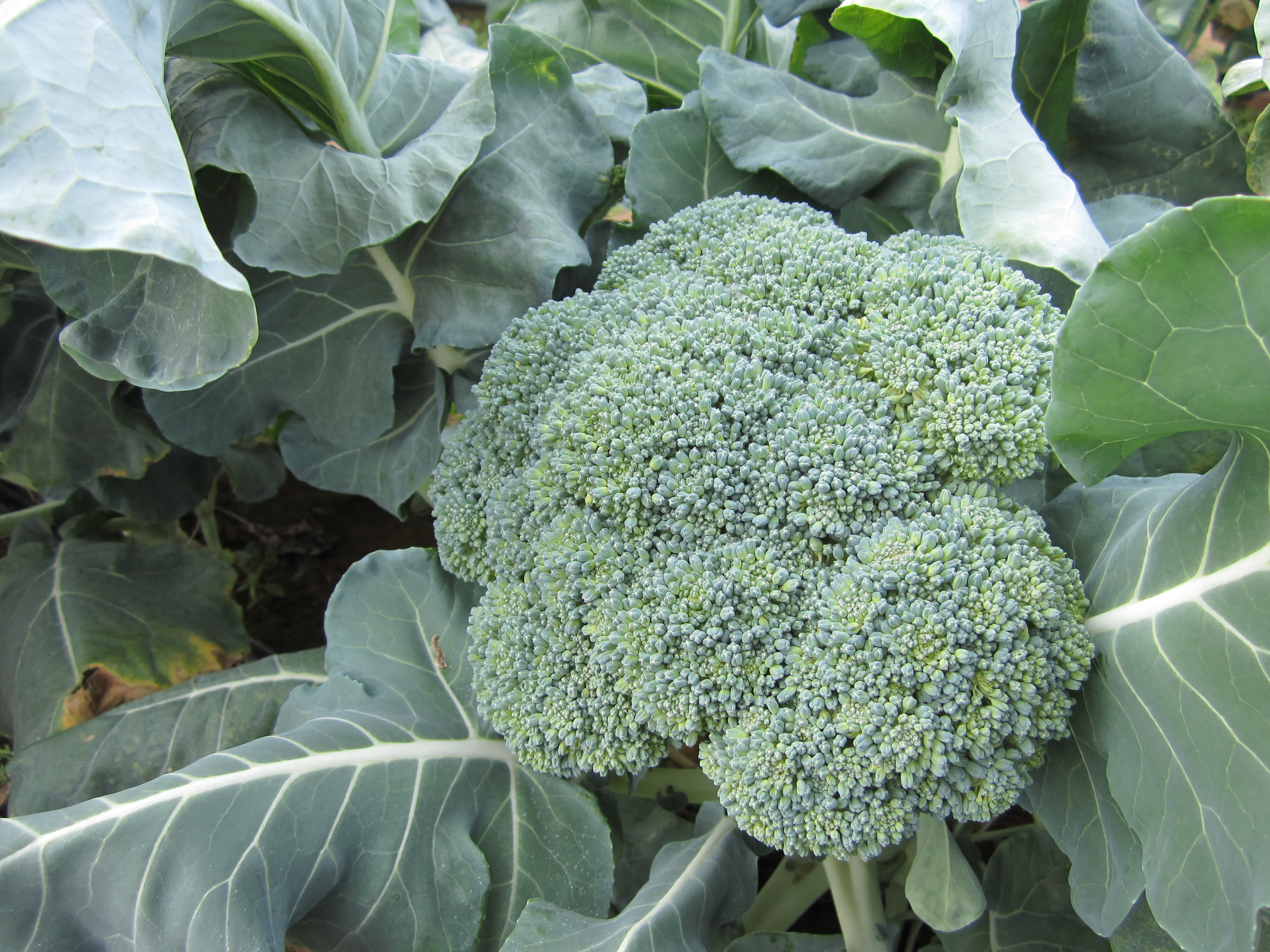
by Blake Thaxton | Dec 16, 2013
This fall, the Gulf Coast Small Farms and Alternative Enterprises Team put in a fall vegetable demonstration at UF/IFAS West Florida Research and Education Center in Jay, Florida. The demonstration had several fall crops such as spinach, swiss chard, lettuce, broccoli, cauliflower, carrots, turnips, rutabaga, kale, and collards. Several of the recommended varieties were grown so that small farmers and home gardeners could visually inspect the different varieties and see what they may want to grow next fall. The recommended varieties came from the 2012-2013 Vegetable Production Handbook of Florida and the 2013 Southeast US Vegetable Crop handbook.
So you can also experience this demonstration, below are pictures of some of the varieties being grown.
Swiss Chard
The swiss chard has done outstanding, although the low temperatures recently did produce cold damage. The swiss chard that was grown in the high tunnel structures has thrived.
 Lettuce
Lettuce
Ouredgeous (romaine), Cherokee (loose leaf), and Ithica (heading) were all grown. Below is a picture of Ithica which has done well, although slow growing up to this point. The cold caused some damage on Ithica as well.
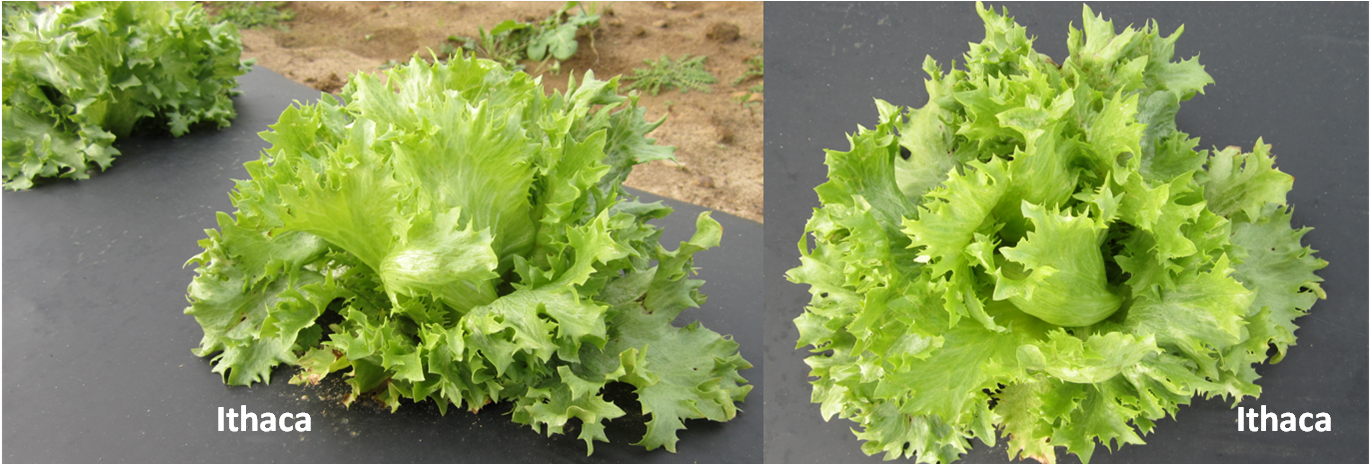 Carrots
Carrots
Suger Snax 54, Purple Haze, and Apache were the varieties grown. They have all done well but appear to have grown much slower than the literature indicates. Beautiful none the less!

Broccoli
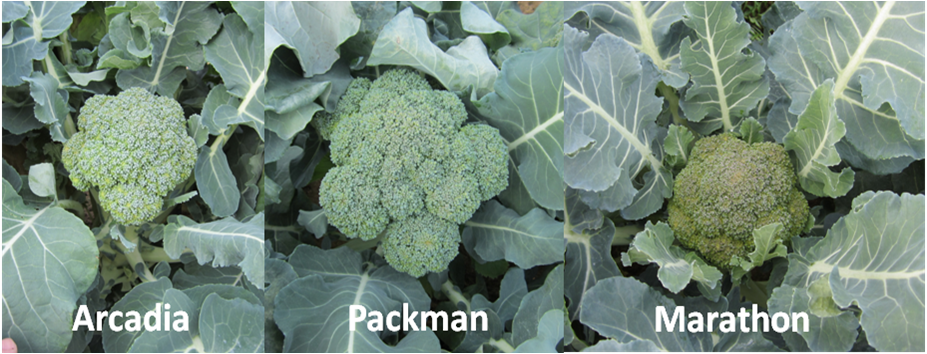
Cauliflower
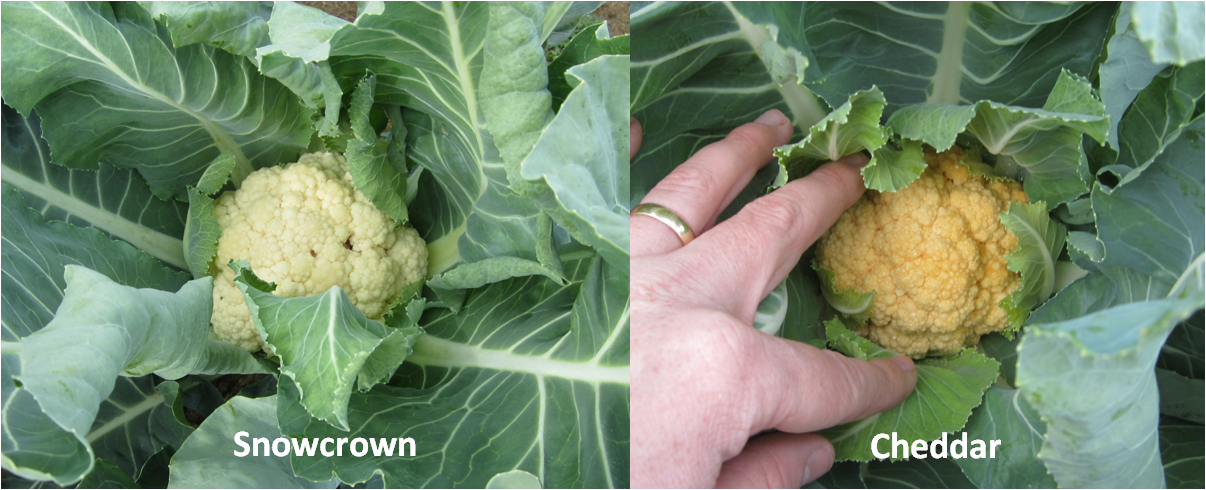 If you want to have a closer look at the varieties, call for a walk through (850)623-3868
If you want to have a closer look at the varieties, call for a walk through (850)623-3868 or email at bthaxton@ufl.edu. Their will be a field day held tomorrow Wednesday, December 18th, at this demonstration site for Master Gardeners and Small Farmers. Click here to register!
or email at bthaxton@ufl.edu. Their will be a field day held tomorrow Wednesday, December 18th, at this demonstration site for Master Gardeners and Small Farmers. Click here to register!
by Carrie Stevenson | Dec 9, 2013
How much is a 400-year old live oak tree worth? Can you buy one online, with free shipping, and charge it to the credit card? Pick one up at the local home improvement store? Ask Santa? Of course not. When admiring a tree that size, we have an innate sense of its value, but we would often have a hard time expressing it in dollars. How about a cluster of trees in a wooded lot? Are they worth more than the dollar store being built there? We are conditioned to appreciate the value of things because there’s a price tag on them. Unfortunately, natural phenomena do not have price tags, and many things that are “free” are often perceived to have no real value.
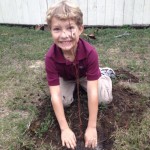
Planting a tree is an excellent way to insure clean air and water in the future. Photo credit: Carrie Stevenson
Trees, however, have value far beyond the price one might pay at a plant nursery. Their roots absorb polluted storm-water runoff, the primary cause of decreased water quality in Florida. Their leaves take in carbon dioxide and release the very oxygen we breathe. Providing homes for wildlife, fruit and nuts for human and animal consumption, compounds that form the basis of countless medications—trees provide innumerable benefits to ecosystems both local and worldwide. If a local government were to construct a facility or method that could filter the air and water at the same efficiency and volume of the trees in ones county, it would cost the community millions.
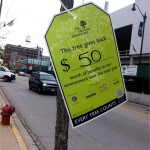
This street tree in Chicago was given a price tag to raise awareness of its value. Photo credit: Eric Stevenson
But how is is possible to capture these benefits in a way that we can relate to? Luckily, a partnership between arborists, engineers, and researchers with private industry, the US Forest Service, and the USDA has resulted in an excellent online tool called the National Tree Benefits calculator. Based on software called “i-Tree,” the calculator allows anyone to enter their zip code, choose from a list of common tree species, and using the diameter of a single tree, calculate its economic value. For example, a 15-inch live oak tree at the Escambia Extension office provides an annual benefit of $79 every year, increasing in value as it grows in girth and height. The website delves deeper into the tree’s value, placing storm-water uptake value at $23.77, electricity savings at $15.23, and the capability to remove 607 pounds of carbon dioxide from the atmosphere.
Extension Agents are currently working with youth in Escambia County to calculate these values for trees on their school campuses, local parks, and yards. When we’re finished, we will hang actual price tags on the trees showing their annual economic value to showcase these facts to residents of the community.
Interested in what kind of economic benefit that magnolia in the front yard is giving you? Check it out yourself at www.treebenefits.com, and let your neighbors know how valuable those trees can really be.
by Julie McConnell | Dec 9, 2013
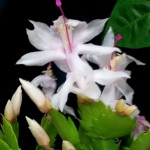
Photo credit: Julie McConnell, UF/IFAS
If you are looking for an easy to grow, colorful indoor flowering plant, look no further than Holiday Cactus. The two main types are Thanksgiving Cactus and Christmas Cactus which have similar care requirements but as the name indicates, bloom at different times.
When purchasing a new plant, don’t assume that it is “Thanksgiving” or “Christmas” based on when it was blooming at the store, growers know how to manipulate plants for flowering based on market demand. Instead look at the leaf shape and anther colors for positive identification. Thanksgiving cacti have pointed teeth on leaf margins and yellow anthers in the flowers. Christmas cacti have flattened leaves with rounded teeth on the margins and purple anthers.
The best spot for your Holiday cactus is a bright location away from any drafts or heating and cooling vents. Keep soil slightly moist, but take care not to over water. They can tolerate some drying out, but too much can cause flower buds to drop. In Northwest Florida’s mild climate you may keep your Holiday Cactus outside most of the year, but protect it from full sun during the summer months and bring it indoors if temperatures are forecast to fall below 50° F.
Fertilize Holiday cacti with a general purpose houseplant fertilizer from April until August following label directions. To make your plants fuller, prune or pinch in June and this will encourage more branching. Holiday cacti are easy to propagate. Take those pieces you pinched off and place in a lightweight potting soil or vermiculite and they will grow roots and you will have new plants to share.
So, how do you control flowering time? Holiday cacti form flower buds based on two environmental factors, photoperiod (length of daylight) and temperature. They are considered “short day” plants which mean that they bloom when light is reduced to 8-10 hours a day, but this description can be a little misleading. The true influencing factor is not the number of daylight hours, but rather the number of hours in uninterrupted darkness. One way to initiate flower bud development is to place the plant in a dark closet from 5 p.m. until 8 a.m. for 20-25 days straight. This treatment will stimulate flower bud development. Another factor that influences flower bud initiation (even without light control) is the temperature at night. The ideal night temperature for flower bud formation is between 55 and 68° F. Temperatures above 68° and below 50° F can prevent flower bud development.
To learn more about caring for your Holiday Cactus visit the following link Thanksgiving & Christmas Cacti Clemson Cooperative Extension HGIC1554.
by Matthew Orwat | Dec 9, 2013
Looking for the perfect Christmas tree to celebrate your Holidays? Join Wendy Wilber, UF/IFAS Extension Alachua County Environmental Horticultural Agent, as she offers tips on finding and preserving your fresh-cut Christmas tree throughout the Holiday Season.
